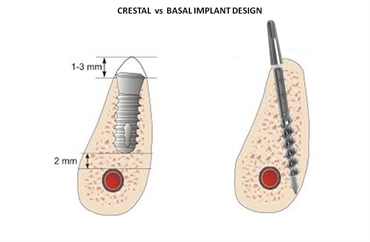Are bicortical implants better than normal implants for patients who are smokers?
December 26, 2022

Dental implants are an advanced treatment modality that replace the natural tooth and restore the functional and aesthetic integrity of the oral cavity. There are different types of dental implants depending on their design. Each of them is indicated depending on the clinical condition of the patient, especially focusing on the density of the underlying bone and the presence of any systemic condition that the patient is diagnosed with.
Usually when implants are placed, they are positioned within the bone. In the weeks to follow, the bone will completely lock with the implant system. This is called osseointegration. During this period a lot of new blood vessels are also formed and there is complete healing of the surrounding tissues that were invaded during the placement of the implant. This process can be delayed if the patient is suffering from a bone disorder, haematological condition, nutritional deficiency or genetic condition. Moreover, patient factors like poor oral hygiene maintenance and presence of harmful habits like smoking can have a direct effect on the healing and prognosis of the placed implant.
What are bicortical or so called basal dental implants?
Bicortical or basal implants are a form of dental implants that take their anchorage in the cortex or the hard, resistant part of the bone. Most other implants are placed in the cancellous or spongy bone. Bicortical implants are useful in cases where the bone height is less. The height of the bone is less in medically compromised patients and is also frequently seen in smokers. In these cases bicortical implants are useful.
When a bicortical implant is placed in the bone of lesser density, than masticatory forces are also better resisted and evenly distributed. Moreover, these implants come as a single unit unlike the other implants where the root component and crown component are fixed separately.
Bicortical implants can be placed within 72 hours of tooth removal. Even in a failed implant case or one where bone is atrophied, bicortical implants can be placed effectively. The cortical bone does not resorb easily and there are less surgical complications following their placement.
What are the most common dental implants complications?
One of the most commonly seen complications after implant placement is the inflammation of surrounding tissues. This condition is called peri-implantitis. It is one of the leading causes of implant failures. It occurs due to the rough surfaces of implants, that harbour more bacteria and cause inflammation. However, bicortical implants have a smooth surface and the incidence of peri-implantitis is extremely rare.
Following a conventional dental implant placement, a graft surgery may be needed to reposition the tissues. However, this is not needed in bicortical implants because of their monoblock design. In fact, bicortical implants are said to mineralize the surrounding cortical bone, which increases their stability. They are cost effective and also ensure the preservation of the vascularity of the bone.
What about patients who are smoking?
Patients who are smokers, diagnosed with diabetes mellitus and have acute periodontitis can receive bicortical implants with considerable success. However, when it comes to smokers, even though cortical bone receives these implants, it is important to educate the patient that it might delay the normal healing process. The irritation caused by nicotine and the high temperature due to bone can impair the blood flow and also weaken the bony architecture. Cortical bone is less susceptible but not entirely non-invasive to these changes. Hence, patients must always be advised to avoid smoking during the healing phase.
Basal or bicortical implants require a lot of expertise to be placed. They require an open flap surgery for placement which is not needed in other implants. Moreover, once it is positioned, the soft tissues need to be sutured back since the flap is raised. This yet again brings in the expertise of the dental surgeon into picture where the sutures must be taken in complete approximation to the placed implant.
Bicortical implants are contraindicated when there is deficient tonicity of the muscles to the bones or weak ligament attachments. Cardiac patients or ones with a cerebrovascular accident should not receive bicortical implants. Furthermore, if a patient is on a drug therapy involving anticoagulants, chemotherapy and bisphosphonates, then the dental surgeon should be informed about the same.
Bicortical implants are certainly better for smokers than conventional implants. However, given the adverse effects of smoking, a patient should strictly repel from the harmful habit during the healing phase.

